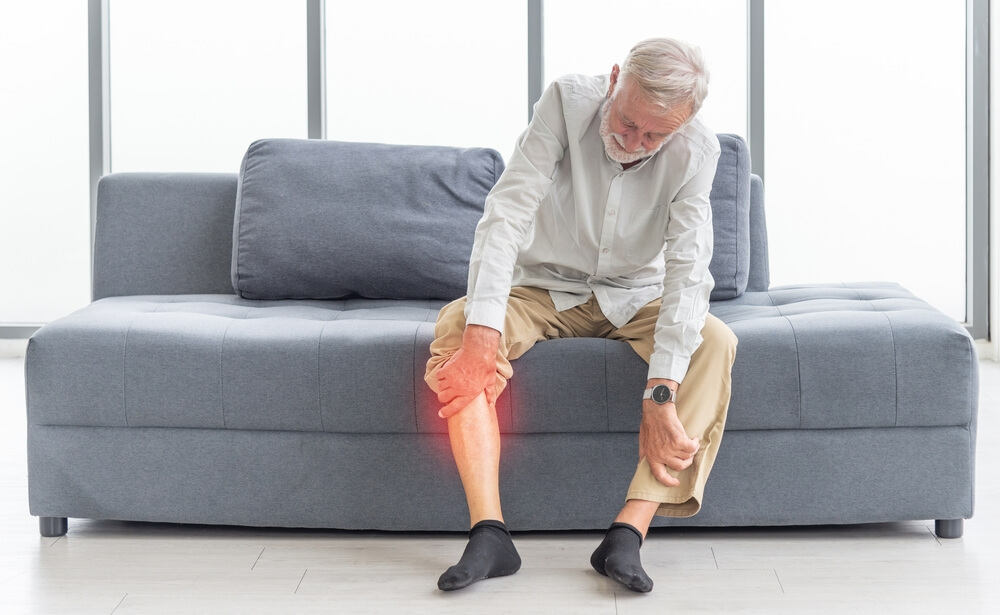The word osteoporosis literally means “porous bone,” and the condition that this term describes refers to weakened bones that are more susceptible to unexpected and sudden fractures. In other words, osteoporosis means decreased bone density, strength, and mass. What makes the disease even more severe is the fact that it usually develops without any pain or apparent symptoms and remains undiagnosed until a fracture happens, usually in the wrist, hip, or spine.
In this article, our team of primary care specialists in Hialeah, FL, has compiled the essential information about brittle bones, covering all the noticeable symptoms of osteoporosis and discussing osteoporosis treatment options.
After reading this article, feel free to contact Carreras Medical Center if you have any more questions or concerns about this condition.
About Osteoporosis
The condition affects an estimated 200 million people across the globe, occurring both in men in women. However, women are generally four times more likely to develop the condition than men.
More specifically, one in four men and one in two women will experience a fracture related to brittle bones in their life after the age of 50.
Osteoporosis is responsible for around two million fractures yearly. Fortunately, there are some steps people can take to prevent the condition from developing, and there are effective osteoporosis treatment options that can slow the rate at which the patient loses bone density.
Osteoporosis Causes

When the condition develops, the holes in the sponge-like inside of the bone (the trabecular bone) start to grow, weakening the inside of the bone and making the cortical bone (the shell of the bone) less resistant to outside pressures.
Bones protect our vital organs and support our bodies, storing minerals like calcium. When the body requires more calcium, it usually does this through bone remodeling (breaking down and rebuilding them); until age 30, people generally build more bone than they lose. After the age of 35, the breakdown process happens faster than the building, which leads to a gradual loss of bone mass. In the case of osteoporosis, the loss of bone density occurs at a greater rate, and for women after menopause, the breakdown process becomes even more pronounced.
Causes and Symptoms of Osteoporosis
Several factors may increase the risk of developing the condition. Still, the two most common risk factors are age and gender.
Gender and age
Women usually undergo rapid bone density loss during the first decade of entering menopause, as decreased estrogen levels will promote bone loss. While everyone is at risk for osteoporosis factors as they age, postmenopausal women or women after 50 have a far greater risk of developing the disease. Research also suggests that Asian and Caucasian women are more likely to develop the condition.
Body weight and bone structure
Thin and petite people are more prone to osteoporosis because they have less bone mass to lose when compared to individuals with larger frames.
Family history
People with grandparents or parents with osteoporosis are more likely to deal with the condition themselves.
Specific medical conditions
The following problems related to irregular hormone levels may also increase the risk of developing osteoporosis:
- Overactive adrenal, parathyroid, or thyroid glands
- Previous weight loss surgery or organ transplant
- Prostate or breast cancer hormone treatments
- A history of missed periods
- Inflammatory bowel disease
- Multiple myeloma
On the other hand, some medication side effects damage the bones and promote osteoporosis. Medications for seizures, steroids, and breast cancer drugs, can all potentially increase the risks of osteoporosis.
Lifestyle habits
Lastly, people who eat a diet poor in Vitamin D and calcium or have anorexia or bulimia are at greater risk for osteoporosis. Tobacco smokers and those who drink alcohol regularly are also more likely to develop the condition. Individuals who sport a sedentary lifestyle are also at a higher risk.
Fortunately, all of these lifestyle habits can be changed.
On the other hand, there are usually no osteoporosis warning signs. Still, the following may be considered symptoms of osteoporosis:
- Height loss by an inch or more
- Posture changes like bending forward and or stooping
- Shortness of breath
- Lower back pain
- Bone fractures
Diagnosing Osteoporosis
Providers typically order bone health tests to understand the patient’s bone density better. BMD or bone mineral tests or Dual-energy X-ray absorptiometry (DXA or DEXA) scans are usually ordered.
These X-ray tests use a tiny amount of radiation to help determine the bone mass in the wrists, hips, or spine.
Osteoporosis Treatment

Treatments may include taking mineral and vitamin supplements, medications, and exercise. Supplements and exercise are often the go-to options that experts recommend to help prevent osteoporosis in the first place.
Medications
Providers may prescribe several different types of medication to address the problem of brittle bones. Your doctor will work with you closely to find the best osteoporosis treatment option and program that caters to your needs.
- Hormone therapies like testosterone, estrogen, and selective receptor modulator raloxifene may be used in men and women, respectively, based on their preferences and risk factors.
- Biologics include injectable compounds that are taken every six months. These are usually prescribed when other options fail.
- Bisphosphonates are antiresorptive drugs that prevent the body from reabsorbing the tissue of the bone.
- Anabolic agents like romososumab-aqqq and teriparatide are injectibles that help build bone in people with decreased bone density.
Supplements
Getting enough vitamin D and calcium is vital both in treating and preventing osteoporosis. Consult with your doctor about creating a supplement and diet plan to help you reach your goals.
The recommended daily amount of calcium is between 1,000 mg to 1,200 mg. Regarding vitamin D intake, it’s best to talk with your healthcare provider, who may recommend blood tests to help assess the necessary amount of daily vitamin D you should take.
Preventing the Condition
Lifestyle and diet are both crucial in preventing and controlling osteoporosis.
That said, eating a calcium-rich diet with dairy products, fish, broccoli, kale, dried figs, and calcium supplements is all essential.
Vitamin D may be taken as a supplement, or you can opt for fortified milk. Still, the best way to get enough vitamin D is by exposing yourself to sunlight a few times every week.
Also, maintaining a healthy lifestyle can help reduce the rate of bone loss. Regular exercises like weightlifting, jogging, walking, and aerobics are all excellent for strengthening your bones.
What’s more, quit smoking and refrain from overconsuming alcohol and high amounts of caffeine.
Prevention Starts With Healthy Choices
As you can see, there are several steps you can take to slow down the bone loss process. Eating well, exercising, and laying off smoking, drinking, and caffeine can all help you prevent osteoporosis. Also, patients who are currently dealing with the condition should know that several treatment options and strategies can make life with brittle bones easier.
To learn more about treatment and preventive measures, feel free to contact our experts today.


